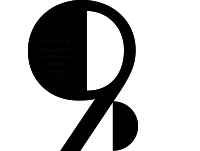Abstract Russian painter and art theorist Wassily Kandinsky in his 1910 book Concerning Spiritual in Art gave one of the most poetic definitions of art:
"In each picture is a whole lifetime imprisoned, a whole lifetime of fears, doubts, hopes, and joys. Whither is this lifetime tending? What is the message of the competent artist?… To harmonize the whole is the task of art."

This pioneering manifesto explains Kandinsky's theory of painting and forms the ideas that were influencing many modern artists. Along with his influential paintings, this book had a tremendous impact on the development of modern art.

Kandinsky discusses the psychology of colors, the language of forms, and the responsibilities of the artist to proceed inward to cultivate the abstract expressions of the inner spirit and away from material representation and the material world.

Kandinsky was influenced by Goethe's color theory, as well as Schopenhauer's and Rudolf Steiner's ideas. Since Kandinsky had inherited or developed synesthesia, he could see music in colors, hear and taste colors, and found similarity between musical and pictorial expression, using hue and color saturation.
He emphasizes the powerful effect of color in the spiritual experience of art:
"Some colors appear soft (rose madder), others hard (cobalt green, blue-green oxide), so that even fresh from the tube they seem to be dry. The expression "scented colors" is frequently met with. And finally the sound of colors is so definite that it would be hard to find anyone who would try to express bright yellow in the bass notes, or dark lake in the treble…
Color is the keyboard, the eyes are the harmonies, the soul is the piano with many strings. The artist is the hand that plays, touching one key or another, to cause vibrations in the soul."

Triangles, circles, squares; reds, yellows, blues—all these were like characters for Kandinsky, with their own personalities and temperaments. Kandinsky examines the interplay of colors and forms in producing a spiritual effect in art:
"This essential connection between color and form brings us to the question of the influences of form on color. Form alone, even though totally abstract and geometrical, has a power of inner suggestion. A triangle (without the accessory consideration of its being acute-or obtuse-angled or equilateral) has a spiritual value of its own. In connection with other forms, this value may be somewhat modified, but remains in quality the same. The case is similar with a circle, a square, or any conceivable geometrical figure.
The mutual influence of form and color now becomes clear. A yellow triangle, a blue circle, a green square, or a green triangle, a yellow circle, a blue square—all these are different and have different spiritual values."
Kandinsky envisions the emergence of abstract art as one of the purest forms of influence on the human soul and anticipating the future of rising spirituality.

“Lend your ears to music, open your eyes to painting, and … stop thinking! Just ask yourself whether the work has enabled you to ‘walk about’ into a hitherto unknown world. If the answer is yes, what more do you want?”


